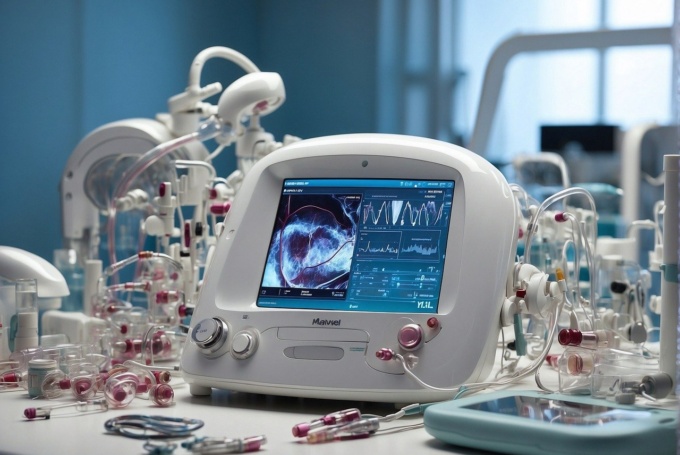From established corporate giants to innovative start-ups, our ‘Spotlight On’ series interviews senior executives across various life science industries, revealing the driving forces behind their company’s success. We delve into the visions and goals of senior executives from various companies, offering an exclusive opportunity to gain insight into the minds of industry leaders, as well as their organisations’ missions, objectives, and strategic goals.
CitoForma is a 3D printing technology company, helping evolve the productive processes and innovation in the field.
In this interview, I spoke with Elon Bar Lev, Sales Director at CitoForma, to discuss his role within the company and upcoming plans for the team.
Watch the full interview here or read the transcript below:
Thank you for this opportunity. It’s almost 2 years since I started in the dental industry. I started off working for Ackuretta the 3D printer manufacturer. It’s kind of where I was introduced to both the technology and the entire industry. The dental industry is a real eye-opener of what’s out there. I was privileged enough to kind of start in a sales marketing position and grow my way up into a more sales-oriented position looking after the reseller network at the time. At the time we were quite a small team, it was still kind of in the starting up phases, and we later expanded the teams and as the team expanded my responsibility became more focused and then I made it to Head of Operations for channel management. So, this means I was looking after the European market.
Excellent. And then obviously now you’ve moved on to it Citoforma.
Yeah. An opportunity presented itself earlier this year, and I decided together with my partner to move back to Europe. Europe is where a lot of the things in this industry are happening. So, I find myself today in the Netherlands, the northern part of the Netherlands working for Citoforma. We specialize in 3D solutions.
Excellent. I know you’ve only been in the market 2 years and I’m sure it’s changed massively since you’ve even started, so what is your opinion on the current market?
It’s ever-changing, and the new technologies are pretty much every week right now. Yeah, there’s a lot to know and there’s a lot to learn. I think the market is adapting nicely. I think a few years ago, larger changes were going on and all these major changes that we have in the industry today. Instead of 10-year gaps between each new revelation, we’re having just a couple of years, and it’s great. It’s fun to be part of it because it’s dynamic and you get to learn these new things. You get to be in touch with people, from everywhere from every part of the world, contributing to this industry that we’re all a part of. And I think the market is ready, I think we’ve seen the changes and the new announcements that have been coming over the past 2 to 3 years, as long as I have been part of it at least, and it’s becoming more widely accepted. It’s still in the infancy stages, it’s still like you know, 3%, 4% adoption, maybe or even less. But you’re starting to see the growth. And my predictions are that you’re looking at massive expansion over the next 2 to 3 years.
What do you think about the future of the market?
Well, what we do is offer the opportunity for smaller resellers across Europe to be able to provide solutions to their customers. They don’t want to have a large investment. They do want to be able to offer the best solution, and the latest technology to their customers and we do that. That’s what our company does. And that’s the market that I know. I’m not talking about the large labs out there; I’m talking about the 5 technician labs. The clinicians out there. To answer your question, where is the market gonna be in the future, I think they will adapt to the technology once they’ve accepted it into their workflows. I think they will only benefit. I think their sales are going to go through the roof, and I think their production is going to increase tremendously.
How do the markets differ in the different locations?
Good question. Well, to start, you’re dealing with one huge market, the biggest market in practice, in the US they have the largest purchasing power – everyone is there and everything going on is there. And in my opinion, it’s slightly easier to work with because you have regulations across the states. Not including Canada Mexico and America. But focusing on the US. The entry barriers are a bit lower. People are more willing to spend money on quality products new things and early adopters. In Europe, the regulations are strict, especially when you’re dealing with medical devices. Also, in European markets you’re dealing with different shipping and customs and regulations per country. And when it comes to the customers as well as end users, whether it’s a lab or a clinic, they have different requirements. Some are looking for the best quality, some are looking for the best price or ease of use, you know. It ranges. So, when it comes down to it, to the end users, you need to understand where they’re coming from, what their struggles are, and you’re offering them the solution. They don’t care what they use to get that final solution. They don’t care if it’s that printer or that printer if they can get the final application to be able to treat their patients safely and responsibly.
You see a lot of companies come from Europe and Asia and struggle in the US and vice versa. US companies going to Europe and struggling, do you think that’s just because they’re not used to operating in different ways?
It could be I think the way business is done in different regions; it differs. It also is a matter of what you’re bringing to the table, some companies are willing to take the active stuff of hiring a local team who know what they’re dealing with and know the local market. But in some cases, that’s not true. I know a lot of Asian companies, mostly manufacturers, that want to enter these markets, whether it’s Europe or the US and they struggle because even though the product is superior and their prices are lower, they just don’t have that mentality of how to promote their products to the local market. Hiring a local team that knows the business and knows the market, that’s how you succeed.
Tell me more about Citoforma’s solutions.
It’s a lot about education, right? New technologies – you’re offering, essentially, better, more efficient, cheaper, everything improved and enhanced to get these essentially similar results, right? If it’s adventure, that’s created way back when compared to when how it’s created now. It’s an improvement in a way. But to get that improved product and to the workflow you need to learn it. So, some workflows if it’s a model, for example, just a basic if it’s for an aligned or study model, are relatively easy to learn. But once you get into the more bio-compatible presence and materials it becomes a bit trickier because you need to be able to design it properly. You don’t want to put the patient at risk. And the workflows are a bit stricter. So yeah, basically what you asked when it comes to, is it just the printer? No. It’s not just a printer. If you simply buy a printer, you put it in your lab, you put it in your clinic, press print, and it’ll come out. You’re going to get a product, but it’s not the final product. There are several steps from A to Z. Whether it’s getting the first scan what used to be the impressions? There’s a lot more education that needs to be done in the current market. And what we’re dealing with, we see this across the board with manufacturers doing webinars, doing courses organizations. They know what these products can offer the customers and labs and clinicians, and they’re just trying to do their best to get the information out there, the education out there and to provide better solutions to better care for patients across the globe.
There was talk of potential printers trying to make implants. Is that something you’re going to re-prioritize – the education going forward to make sure people understand really what the product is?
Absolutely. To add to your point implants and direct the liners. So, imagine the potential of skipping an entire step of creating a model for them, a form and a liner and just printing the liner directly from the printer. That is happening when we think technology evolved. And to be able to cut out that step means not only is it easier for the production step for the consumer, but also imagine the sustainable impact the environmental impact it has because you’re cutting out. If, let’s say the production of 6 million 10 million lines a year, some lab, they reach those numbers. You cut out that middle phase of 10 million models – that’s a lot of reason that’s not being you. That’s a lot of friendliness going on. So yes, we are focusing on education. We’re doing this in a couple of ways: One is we’re teaming up with local clinics and labs to be able to provide case studies for the solution, so we find a lab or clinic that we’d like we provide them with the product whether it’s entire 3 solution. We can provide them freely relevant and then based on the case study that they provided us with data we were able to publish this and show future customers what was done. We’re also very picky with who we work with regarding our manufacturers and our suppliers.
Where do you see yourself going in terms of your career and what are the end goals?
I love this. I’m not in it for the money. I thoroughly enjoy what I do. It’s dynamic. Like I said earlier, you learn new things every single day. Unlike my previous role, now I have more contact with end users, which is priceless information and experience to know what their struggles are and to know how to provide the best patient care. And how what I see myself in a couple of years, I don’t know, continuously being challenged with new moves and relocations and new companies and just markets, seeing what else is out there, what other technologies. Because I heard a lot about SMS. So, metal linking jet fusion technologies that I’m not currently working with. Even though we do have a large industrial segment that we care for, it’s not my focus, but I am learning about it, and I think it will be fantastic what the things you can do later with this technology.
Do you have any tips for anyone entering this space?
First of all, always keep an open mind. Learn new sense on top of it really like subscribed to all the big outlet for this new the information. Keep updated with the latest and greatest. Then, go to shows. I know I realize that not everyone is privileged enough to be in a position to go to international shows, but that’s the way I learned. Meet people, talk to them, bring up new ideas, question everything and just gain knowledge.
Do you think trade shows will sort of die off in terms of selling but become more of the educational lens?
I think the idea of going out to a trade show to sell something is dying off because first of all, the expenses on the show are exuberant. But once you get to the gift of it, all you’re meeting industry, people, industry leaders, you’re exposed to this play technology. That’s that so you don’t even you’re not aware of. But walking the floor, seeing these booths seeing these people these companies and what they can do. I mean, it’s just fascinating and I think that’s what trade shows are becoming. And I’ve been here quite a limited time, I realize but that’s the experience I have so far. I’ve just been able to learn so much.
To find out more about about CitoForma, take a look at their website. Looking for help with your recruitment? Book a consultation with one of our consultants. Or looking for an exciting new career opportunity? Browse our jobs page, or register your CV with us. You can find other interviews with senior leaders in the space over on our blog channel.




